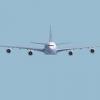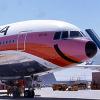Hello, community! I am going to start a new series of posts for your general help! If you are trying to decide between the 737-600, CS-100ER, and E-195AR, you're in the best place possible! Please be aware that this particular comparison includes several premises that are theoretical and unproven.
- The airline will use, depending on which aircraft is selected, either: 15 737-600, 15 CS-100ER, or 20 E-195AR.
- The airline will use, no matter which aircraft is selected, 11.5 hours per day of utility.
- The airline will pay pilots $83/hour.
- The airline will pay Cabin Crew $35/hour
- The airline will have a total crew of 5, two pilots and three cabin crew.
- The airline will lease the selected aircraft for 10 years and buy the aircraft when the lease is up (or almost up)
- The airline will keep the selected aircraft in the fleet for 15 years.
- The airline will attempt for the selected aircraft to have a 30% MARR.
- The airline will choose the most fuel efficient option for engines in terms of fuel flow for the aircraft that is selected.
Now that the conditions are disclosed, now for the results. The first result I am going to point out is the required daily profit for the different aircraft.
- The 737-600 requires a daily profit, per aircraft, of $78,378 to maintain the 30% MARR.
- The CS-100ER requires a daily profit, per aircraft, of $64,846.11 to maintain the 30% MARR.
- The E-195AR requires a daily profit, per aircraft, of $67,905.41 to maintain the 30% MARR.
This result contradicts my original hypothesis that the 737-600 would be a better choice than the E-195. I believed that the 737 would be a better choice because of the fuel usage over the lifetime of the aircraft.
- The 737-600 fleet would use $2,441,275,200 ($2.4 billion) of fuel in the 15 years of operation, assuming the above statements with a fuel price of $3,276/hour (I calculated this with the specific fuel consumption and the fuel price estimated by CS_Pon.)
- The CS-100ER fleet would use $2,139,022,080 ($2.1 billion) of fuel in the 15 years of operation, assuming the above statements with a fuel price of $2,870.40/hour.
- The E-195AR fleet would use $3,352,803,840 ($3.3 billion) of fuel in the 15 years of operation, assuming the above statements with a fuel price of $3,374.40/hour.
The reason the E-195 fuel price is almost $1 billion above the 737-600 is because the E-195s have a fuel consumption rate that is about 2,000 lbs/hour more and there are 5 more E-195s. However, I am not ready to write off the 737-600 yet. One of the key factors that makes this competition so close is leasing. The most expensive option is the CS-100ER, while the E-195 is cheaper.
- The 737-600 fleet will cost $643,999,800 over the lease period. The annual lease cost is $4,293,332. Each aircraft will cost about $42,933,320 over the lease period. The 737-600 is the cheapest option in terms of lease cost for the entire fleet over the entire time. It is the middle option in terms of yearly per aircraft lease.
- The CS-100ER fleet will cost $671,999,850 over the lease period. The annual lease cost per aircraft is $4,479,997.20. Each aircraft will cost about $44,799,992.00 over the lease period. The CS-100 is the median option in terms of lease cost over the entire period, but is the most expensive per aircraft and per year.
- The E-195 fleet will cost $746,665,920 over the lease period. The annual lease cost per aircraft is $3,733,329.60. Each aircraft will cost about $37,333,296 over the lease period. The E-195 is the cheapest option in terms of yearly lease but the most expensive over the lease period.
Overall, one could say that in a decision between these aircraft, the CS-100ER is the obvious choice. It's fuel efficiency makes it need the least amount of daily profit per aircraft to make the 30% return on investment. However, for an airline pressed for cash at the beginning of the order, the E-195AR is a great choice. The problem with the E-195 is that there needs to be more aircraft to cover the demand that the 737 and CS-100 can cover. Some of the factors an airline would need to take to make sure this would be good for the airline is to consider the increases of gates needed for the E-195, as well as future changes for the C-series in game (I'm not sure if it has been updated in the last few years, if it has, disregard). The 737 is a great option as well, especially if the airline already has 737s in the fleet. In the end it is the airline's decision to make. One of the key factors of this decision is time period. This comparison only makes sense after 2014. In 2006 the airline could make the decision between the -195 and the -600. My next topic will be comparing the CRJ-200LR, ERJ-145LR, and ATR-42-500.
Edited by bAnderson, 31 March 2017 - 02:34 PM.

 Sign In
Sign In Create Account
Create Account




 Back to top
Back to top
















